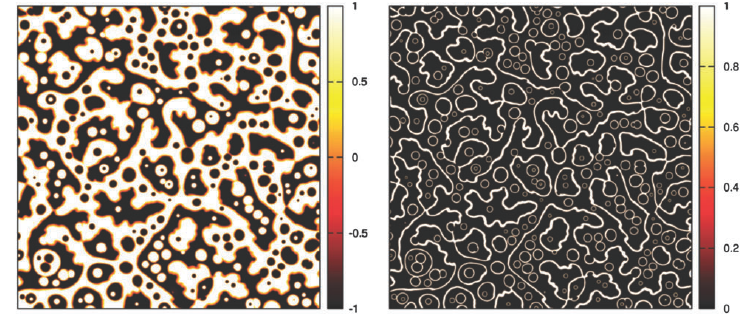
Gyula Tóth1, Tamás Pusztai2, László Gránásy2,3
1Department of Mathematical Sciences, Loughborough University, Loughborough, Leicestershire, LE11 3TU, U.K.
2Institute for Solid State Physics and Optics, Wigner Research Centre for Physics, P.O. Box 49, Budapest H-1525, Hungary
3BCAST, Brunel University, Uxbridge, Middlesex, UB8 3PH, United Kingdom
We present a new multiphase-field theory for describing pattern formation in multi-domain and/or multi-component systems. The construction of the free energy functional and the dynamic equations is based on criteria that ensure mathematical and physical consistency. We first analyze previous multiphase-field theories, and identify their advantageous and disadvantageous features. On the basis of this analysis, we introduce a new way of constructing the free energy surface, and derive a generalized multiphase description for arbitrary number of phases (or domains). The presented approach retains the variational formalism; reduces (or extends) naturally to lower (or higher) number of fields on the level of both the free energy functional and the dynamic equations; enables the use of arbitrary pairwise equilibrium interfacial properties; penalizes multiple junctions increasingly with the number of phases; ensures non-negative entropy production, and the convergence of the dynamic solutions to the equilibrium solutions; and avoids the appearance of spurious phases on binary interfaces. The new approach is tested for multi-component phase separation and grain coarsening.





